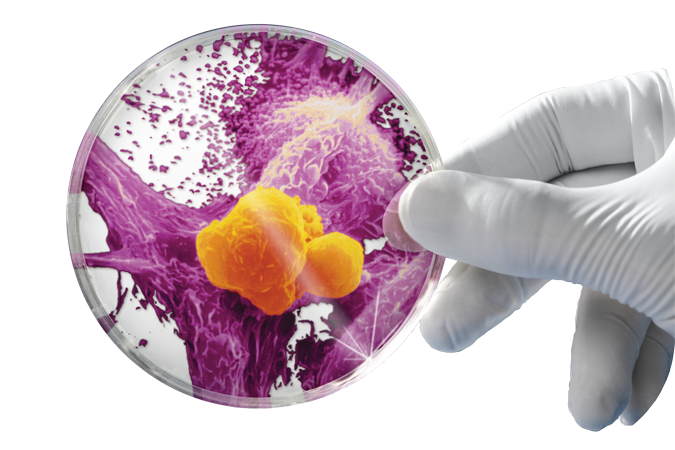 During his recent State of the Union address, President Trump acknowledged his success in passing the Right to Try Bill. One of the law’s namesakes, Matt Bellina, recently began treatments under the law for his ALS. A cancer patient in California with terminal glioblastoma also announced that they began experimental treatments this past November. Needless to say, conversation surrounding the law is buzzing. If the FDA already has an Expanded Access program, did we really need Right to Try? Only two people have reported using the law since its passing in 2018. Is it really making a difference?
During his recent State of the Union address, President Trump acknowledged his success in passing the Right to Try Bill. One of the law’s namesakes, Matt Bellina, recently began treatments under the law for his ALS. A cancer patient in California with terminal glioblastoma also announced that they began experimental treatments this past November. Needless to say, conversation surrounding the law is buzzing. If the FDA already has an Expanded Access program, did we really need Right to Try? Only two people have reported using the law since its passing in 2018. Is it really making a difference?
Well, first off, we did need the law. Here are five main reasons why.
1. It gives terminal patients a way to access life-saving treatments when they need them the most: right now.
The FDA’s process of approving treatments is not quick. It can take nearly 10 years for drugs to pass the trials and actually be approved and on the market. Many terminal patients will likely die waiting for drugs that could save their lives to be government-approved.
Good News: Right to Try gives terminal patients the chance to try potentially life-saving drugs before they’ve been fully approved as long as they are deemed safe enough to pass a Phase 1 trial.
2. It gives patients who can’t join clinical trials the chance to try experimental drugs.
Clinical trials are widely available for patients suffering from diseases. But if you’re terminal, you usually don’t qualify for these trials. This is because your disease is probably too advanced or your quality of health is too low. Unfortunately, this means that you aren’t able to try out the drug being tested in the clinical trial.
Good News: Right to Try gives terminal patients the opportunity to try the drugs that could save their lives.
3. It gives patients who have participated in a trial that ended the chance to keep trying the drug.
There are a few times when terminal patients are eligible to participate in clinical trials. Sometimes the patients who undergo them see great results with the treatment they’re using. But when the trial ends, so do their treatments. Because they’ve already taken part in the trial, it’s not likely that they’ll be eligible for another one.
Good News: Right to Try gives patients who have seen good results with a clinical trial treatment the opportunity to access that treatment once the trial has ended.
4. It offers much more opportunity than the FDA’s “Compassion Use.”
Yes, it’s true that the FDA does have an Expanded Access program called “Compassionate Use” that allows terminal patients to fill out applications to access investigational drugs. But the program consists of a complicated application process that takes a very long time. Patients who are dying of a disease don’t have that time. It’s also expensive.
Good News: Right to Try offers terminal patients a way to access investigation drugs without having to go through a time-consuming and expensive application process.
5. It allows patients the freedom to choose how they treat their disease.
The United States Constitution is built upon the concept of freedom. It would seem that the freedom to save your own life would most certainly be included in that. But it wasn’t long ago that the government felt they should be the ones to decide whether or not you could try certain treatments.
Good News: Right to Try gives patients the opportunity to take advantage of the freedom they deserve. It allows patients to take their lives into their own hands an decide whether they want to take the risk of trying certain treatments before they die.
Those are five crucial, life-or-death reasons why it was essential that Right to Try became federal law.
Addressing the other points of interest surrounding the law lately is a little more complicated. It seems one of the top reasons why terminal patients haven’t yet been treated under the law has little to do with the actual law and more to do with the drug companies themselves.
 The conditions of the law say that no doctor or pharmaceutical company is required to participate in Right to Try. Right now, many drug companies are claiming that treatments are too expensive to offer to the public. While this has been rather disappointing to many patients and their families, there is a glimmer of hope we can hold onto. The California glioblastoma patient who began treatments back in November clearly shows that accessing drugs under the law is possible. The hope is that we see more cases like that one in this new year.
The conditions of the law say that no doctor or pharmaceutical company is required to participate in Right to Try. Right now, many drug companies are claiming that treatments are too expensive to offer to the public. While this has been rather disappointing to many patients and their families, there is a glimmer of hope we can hold onto. The California glioblastoma patient who began treatments back in November clearly shows that accessing drugs under the law is possible. The hope is that we see more cases like that one in this new year.


























